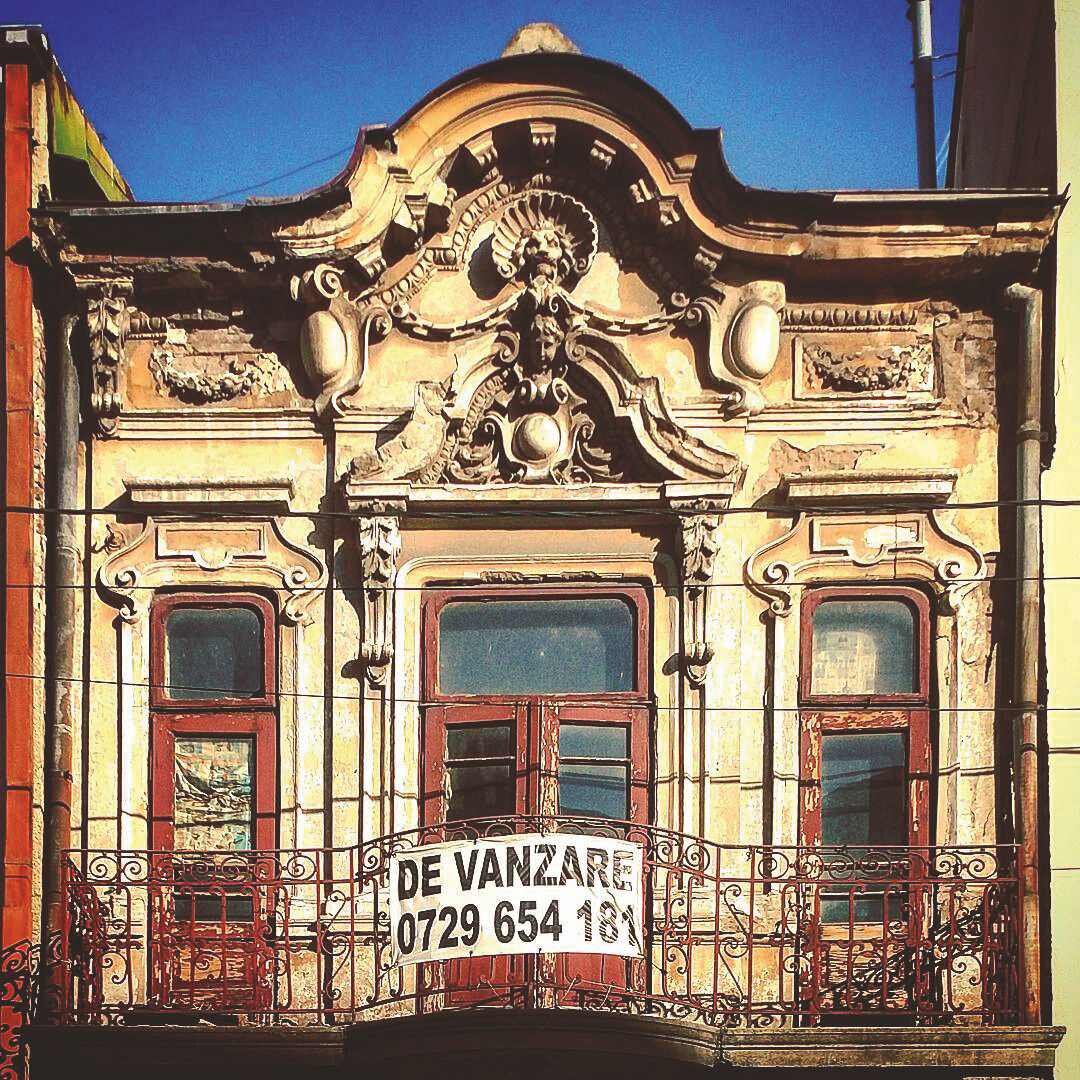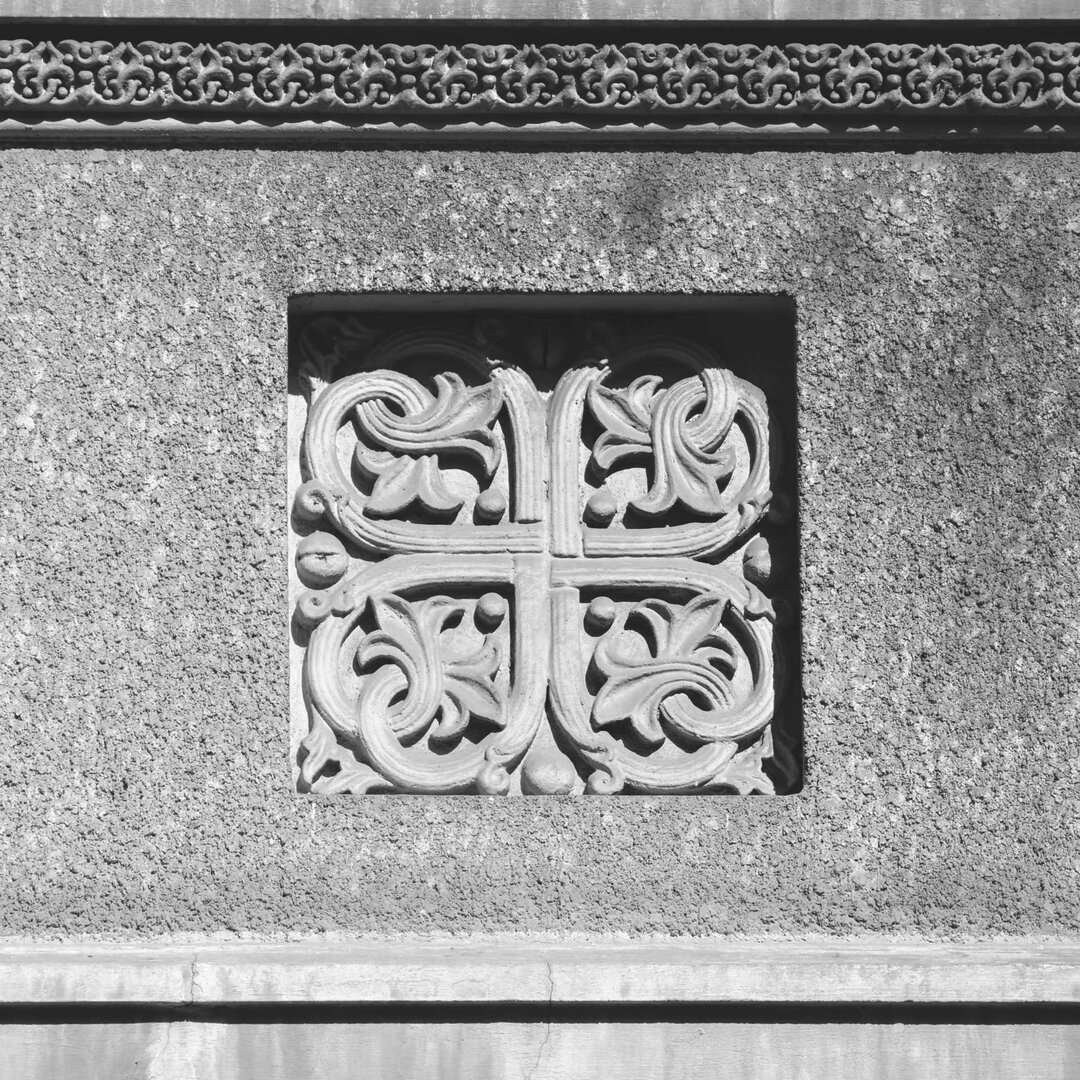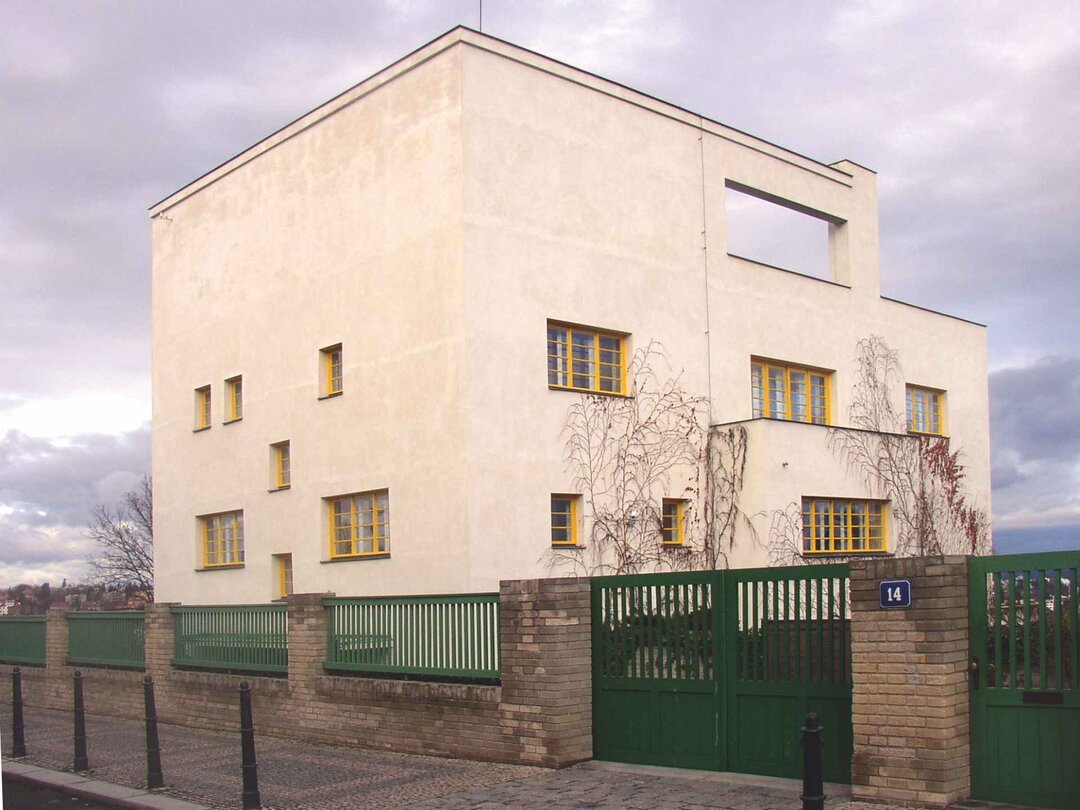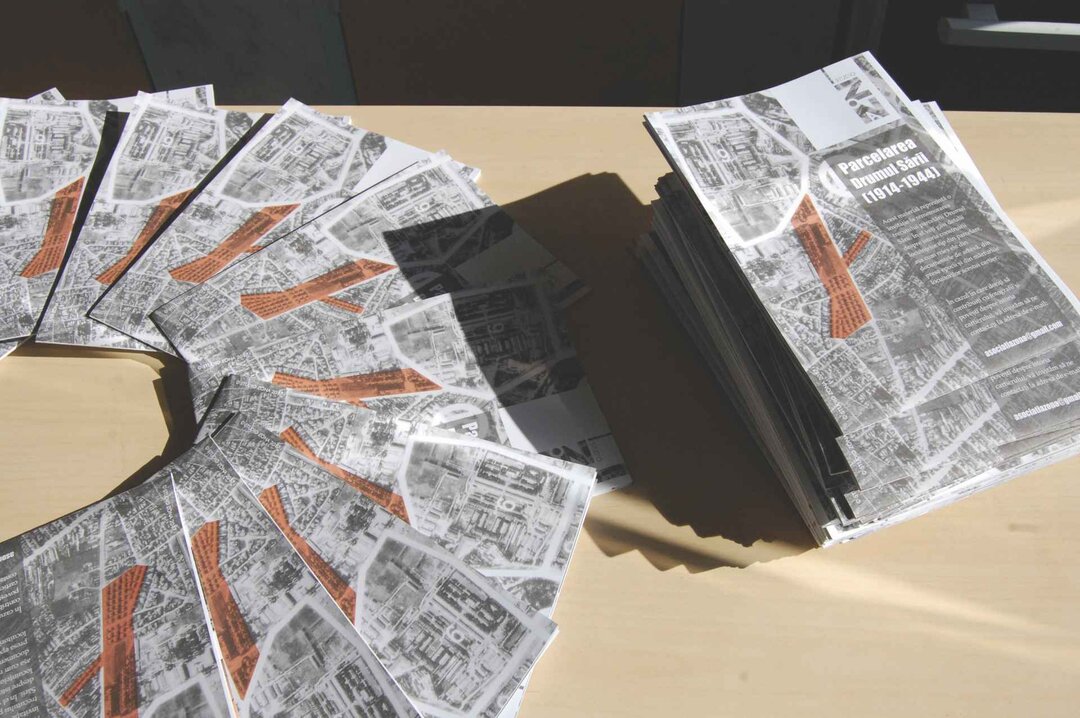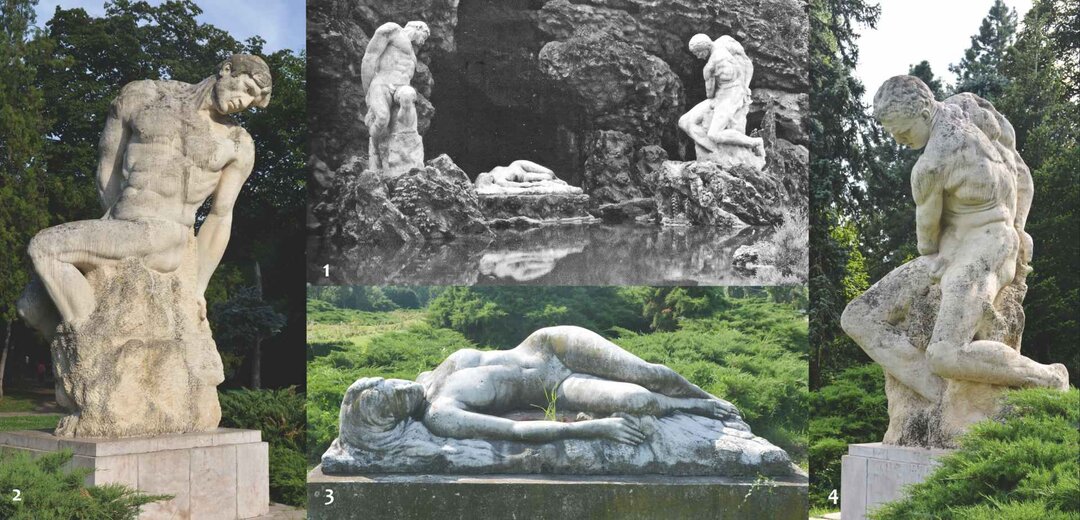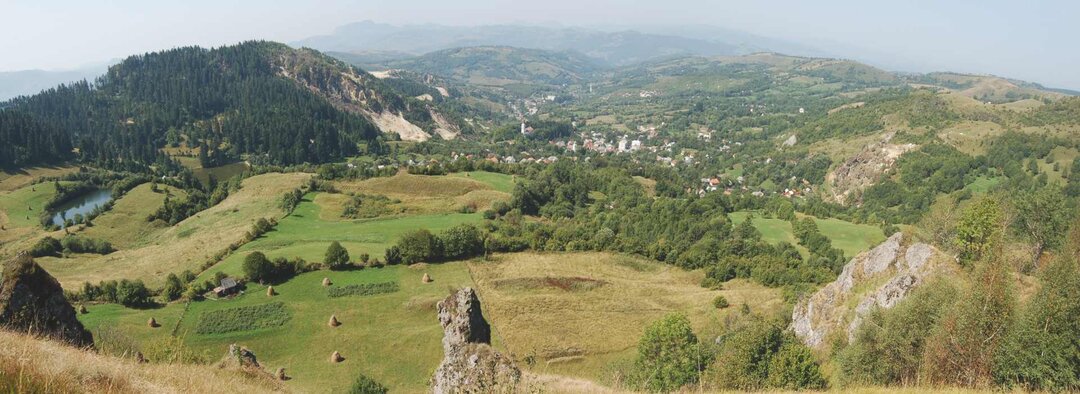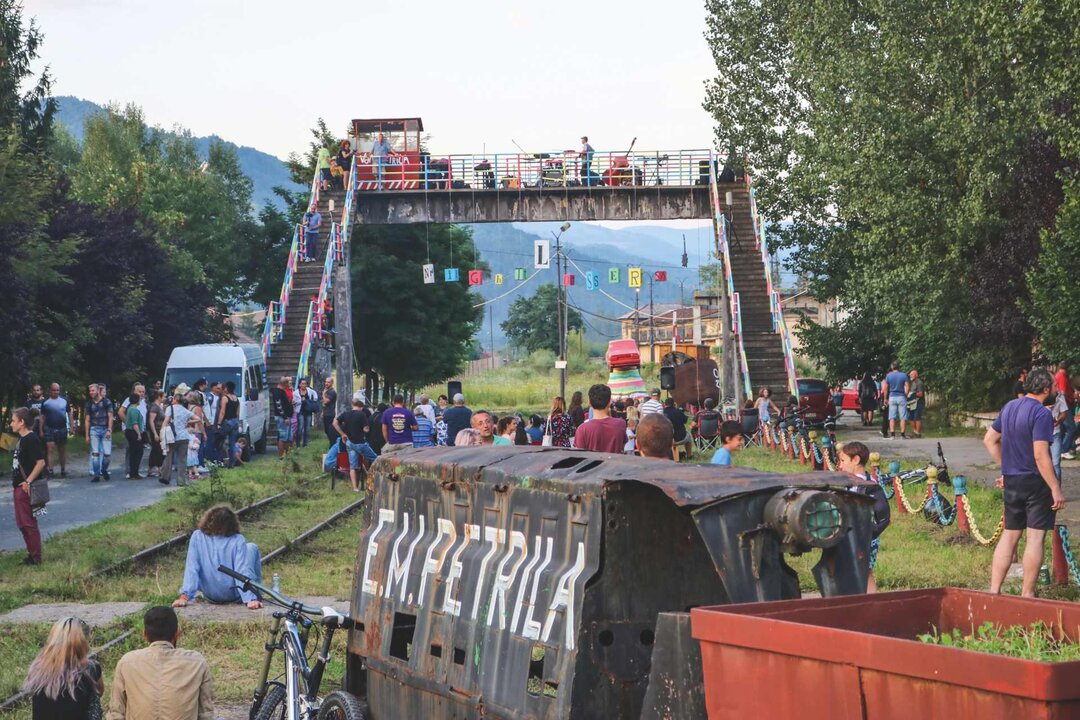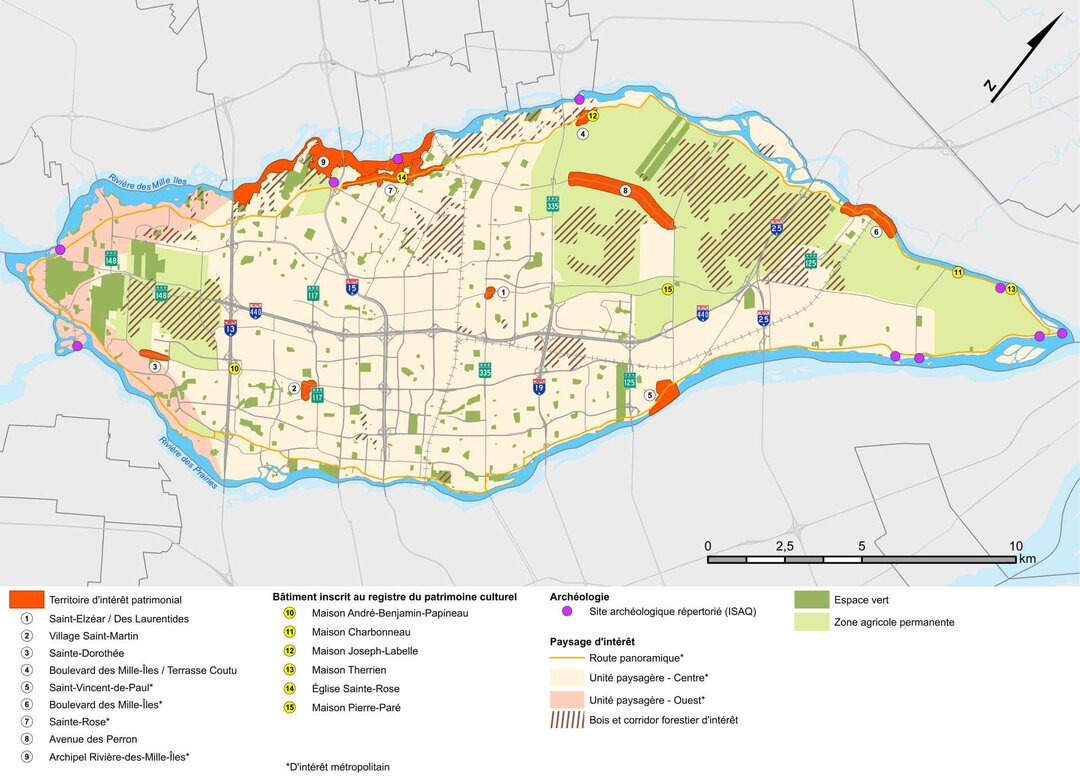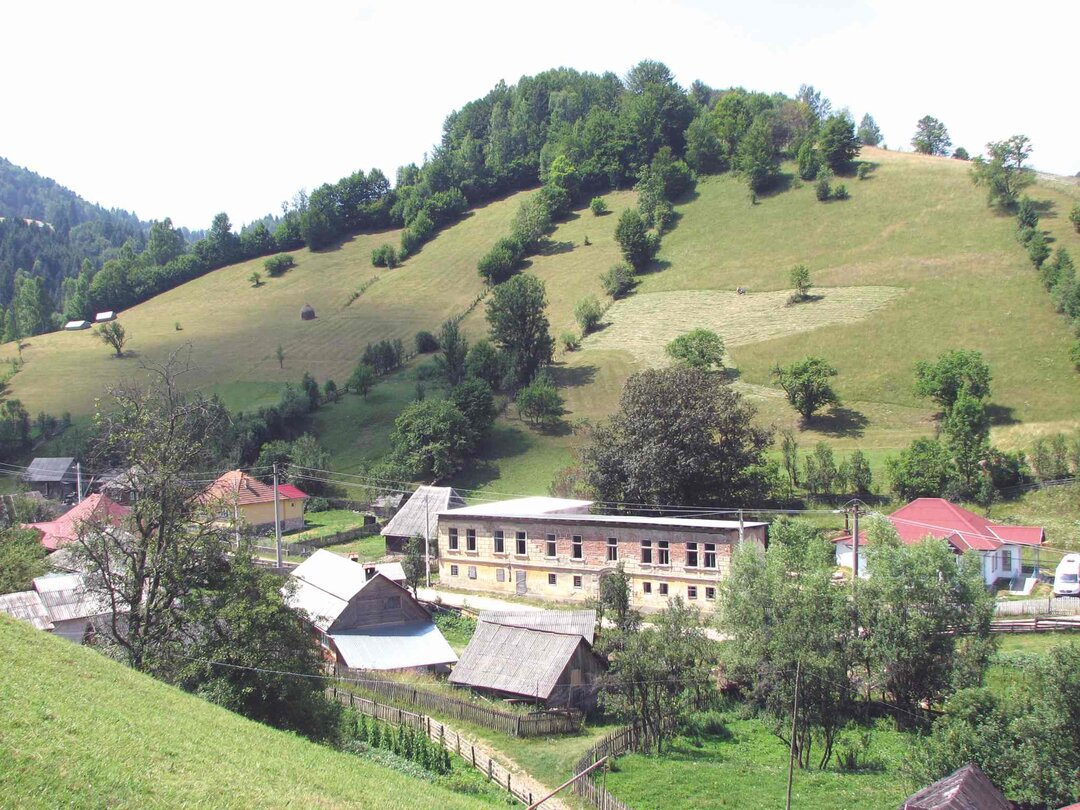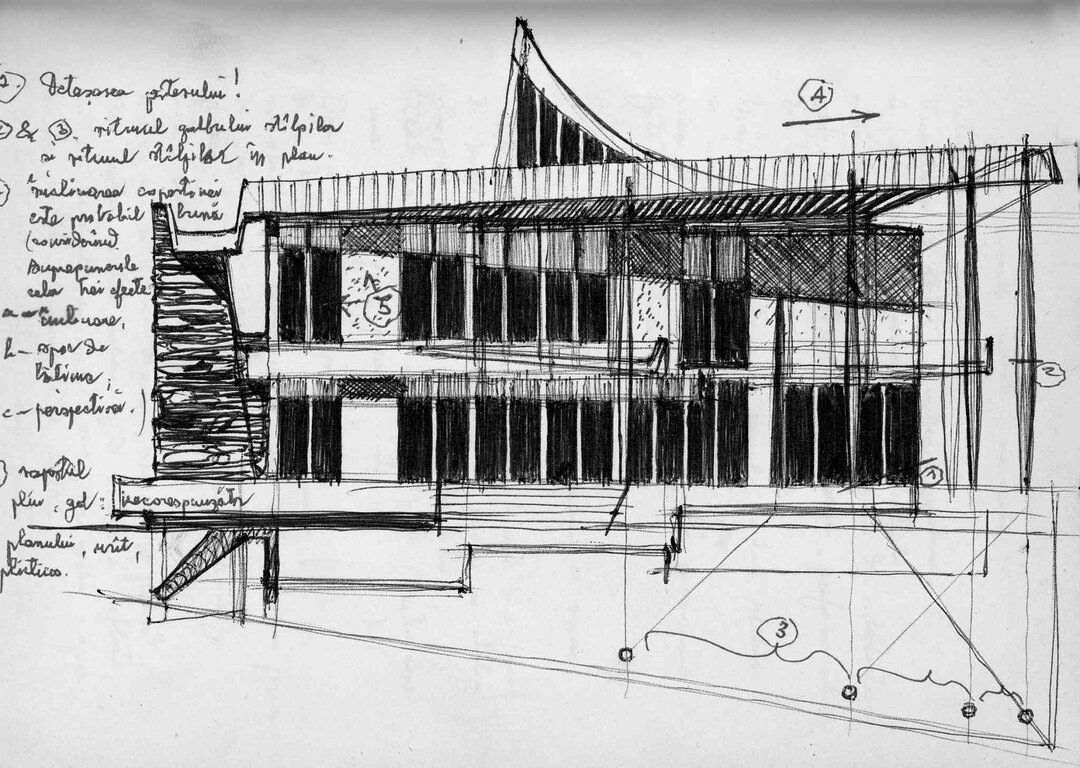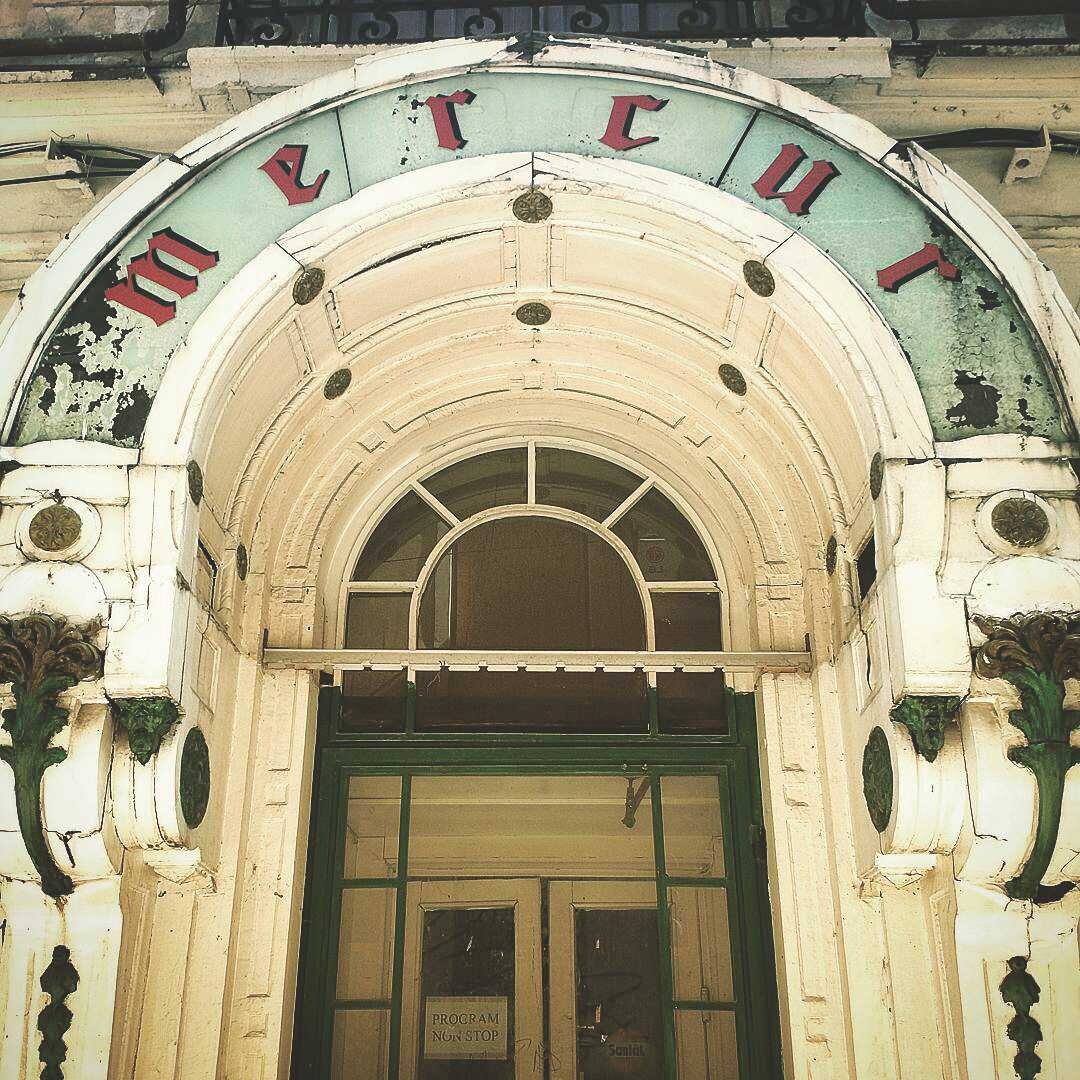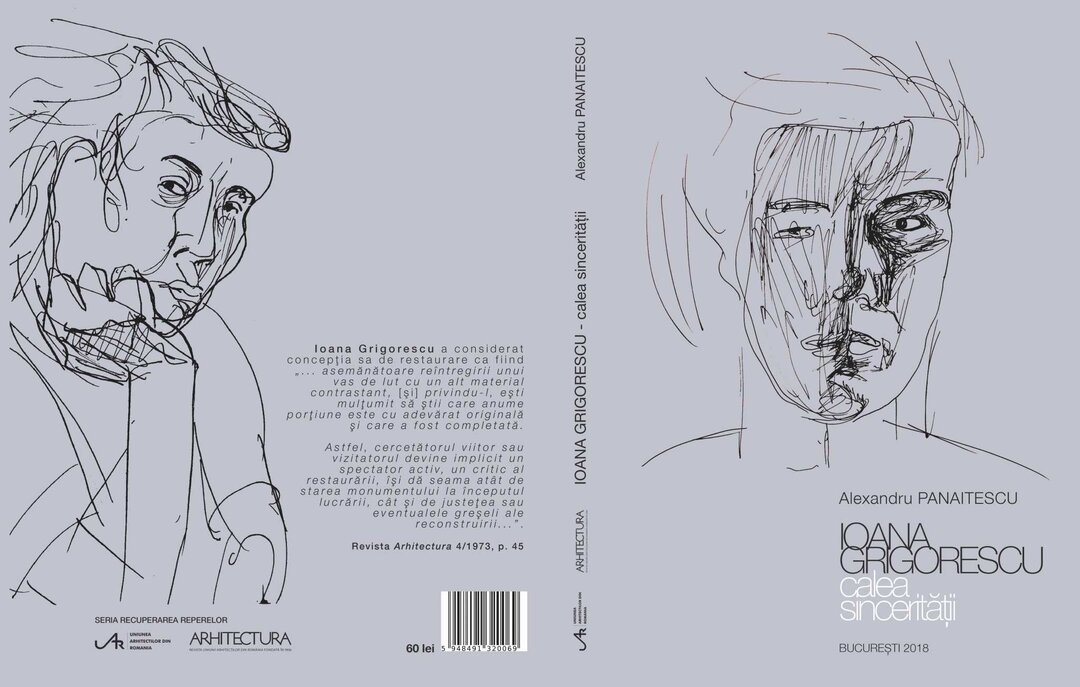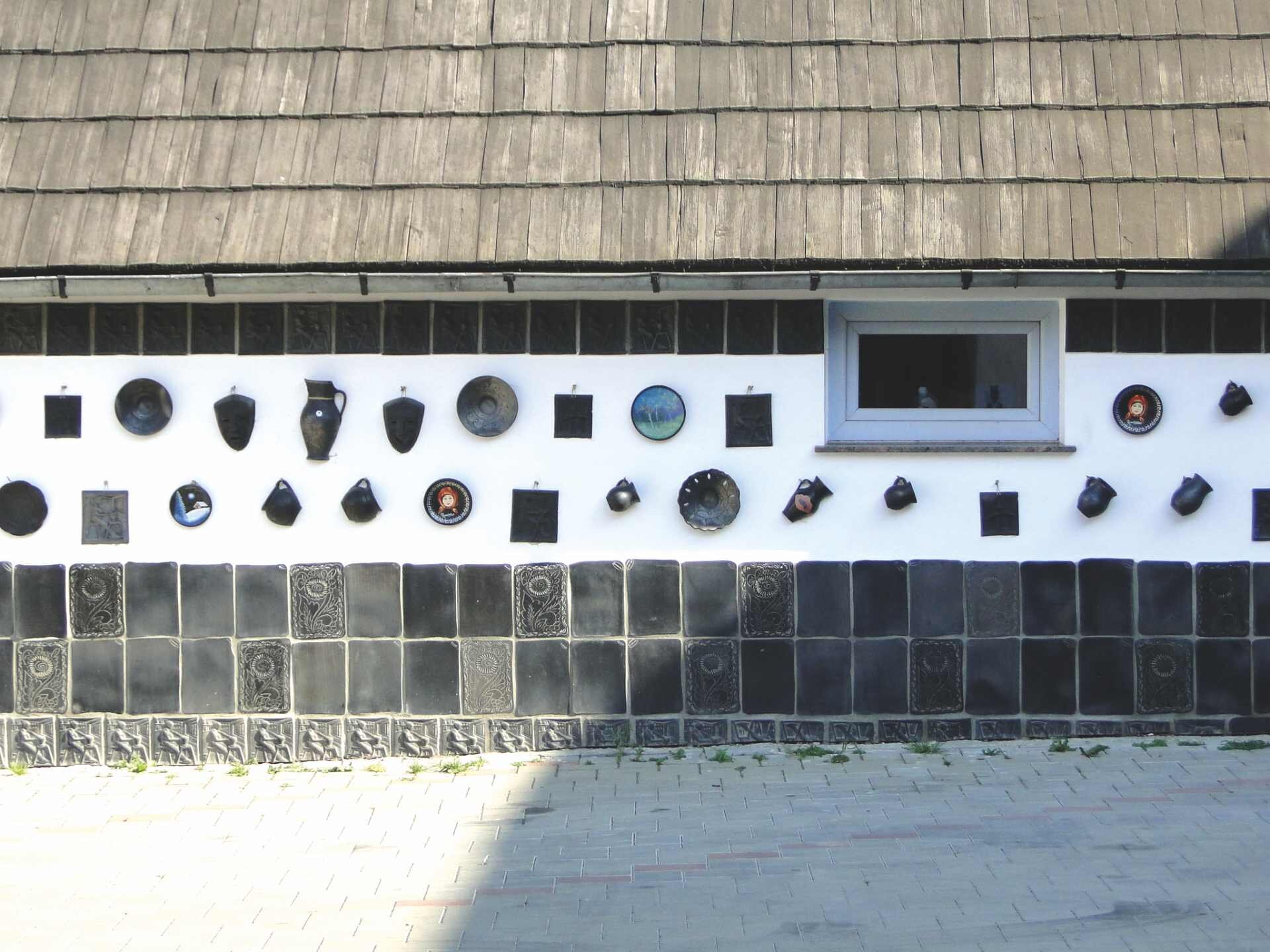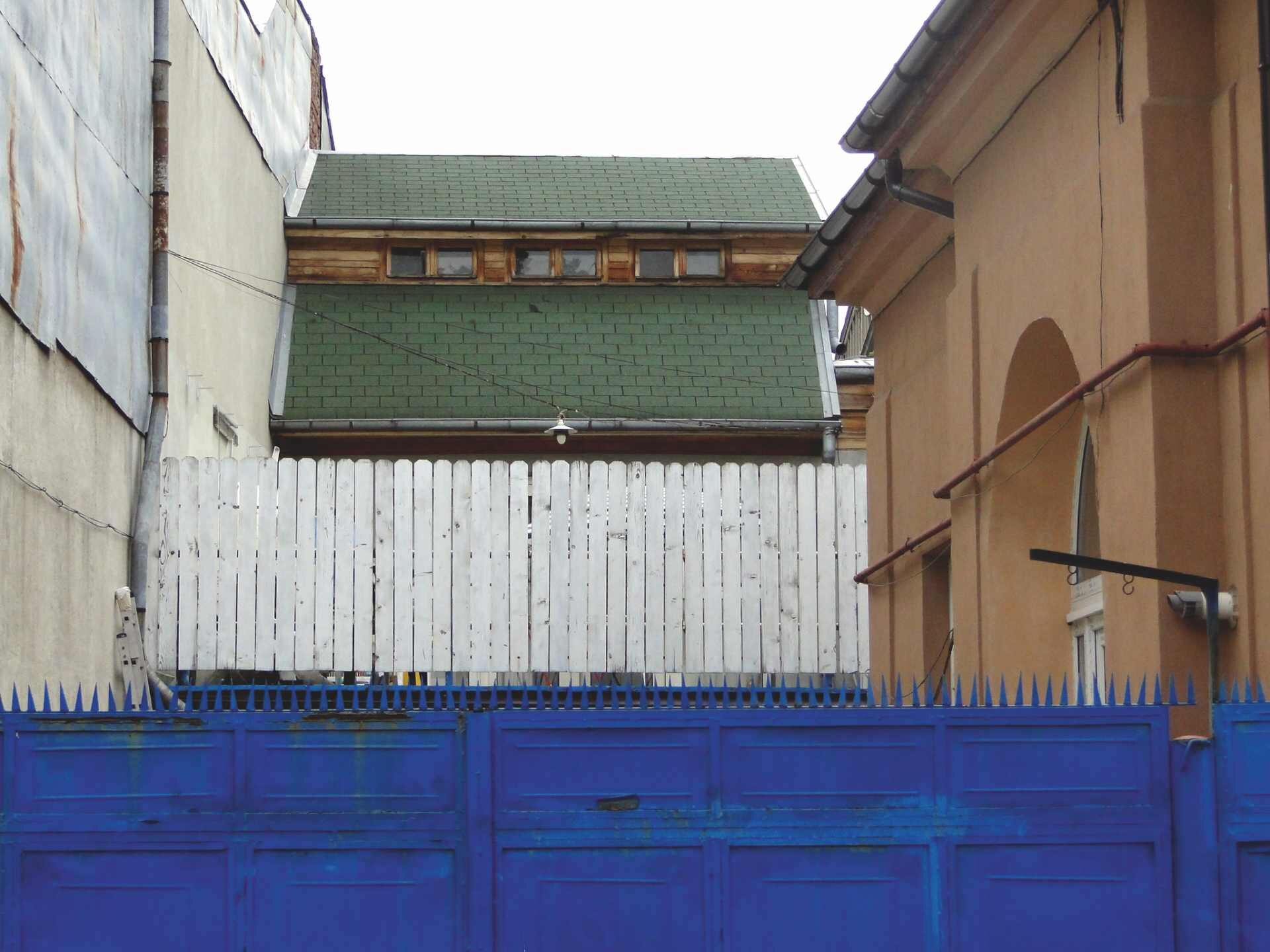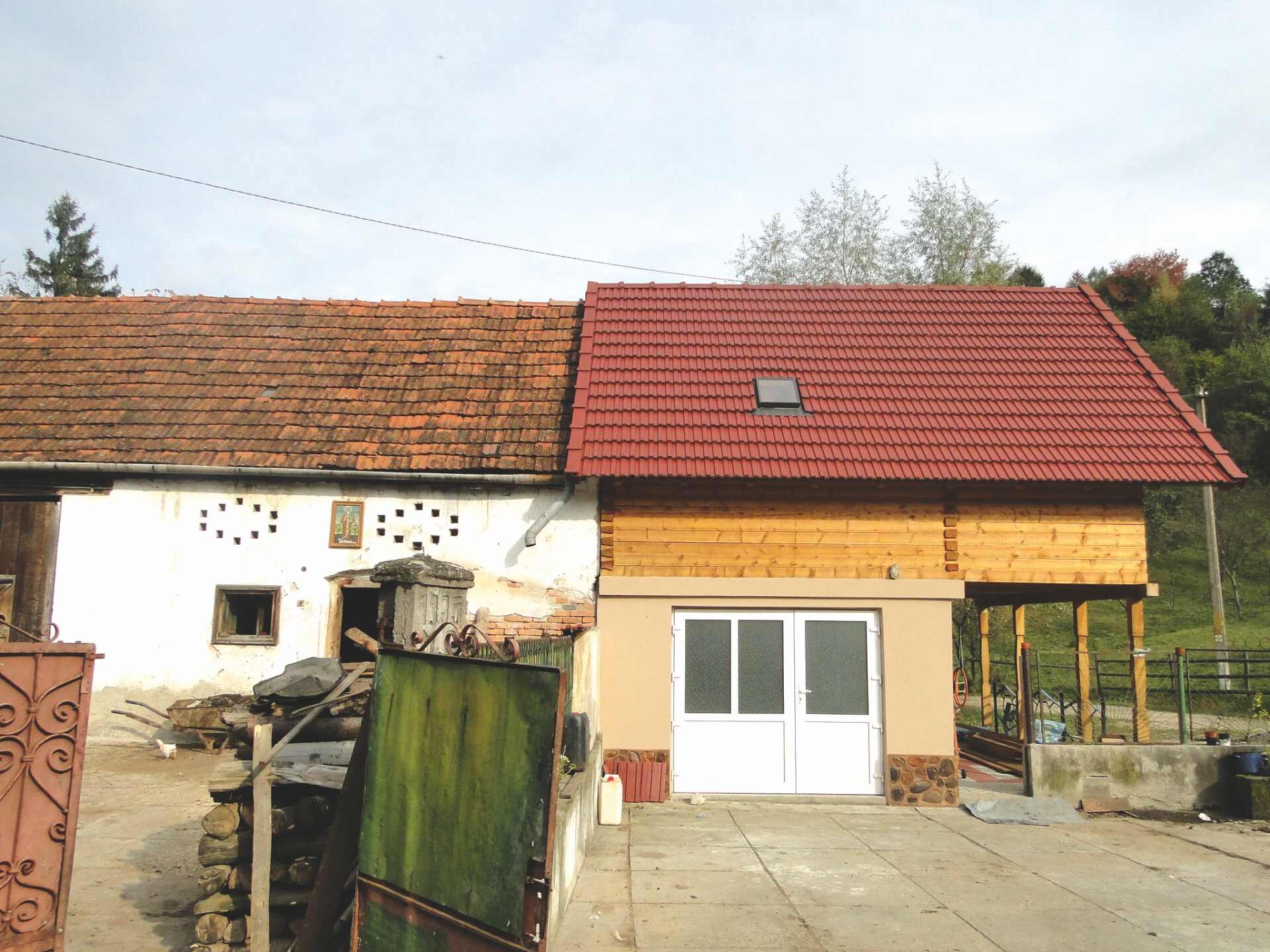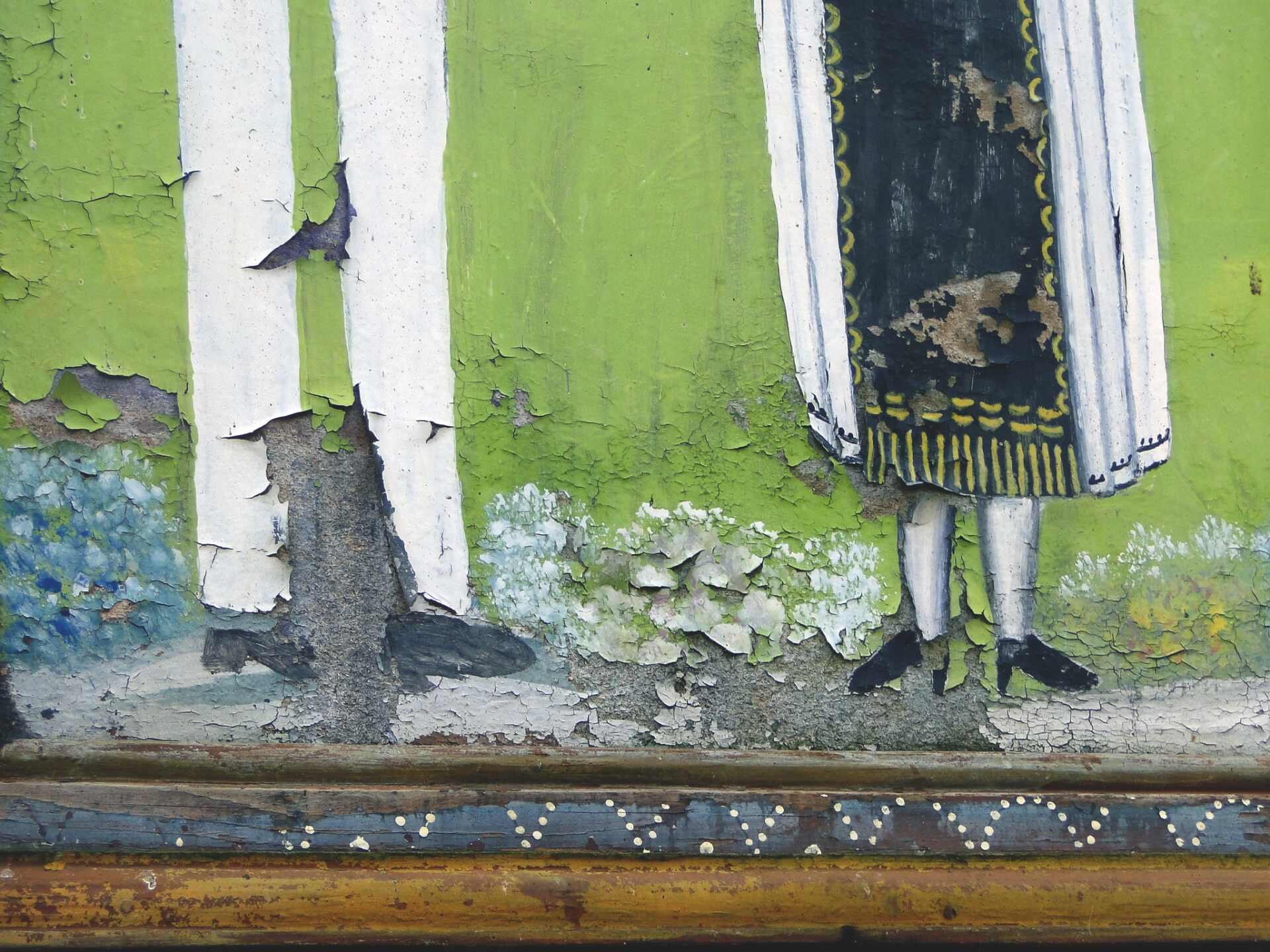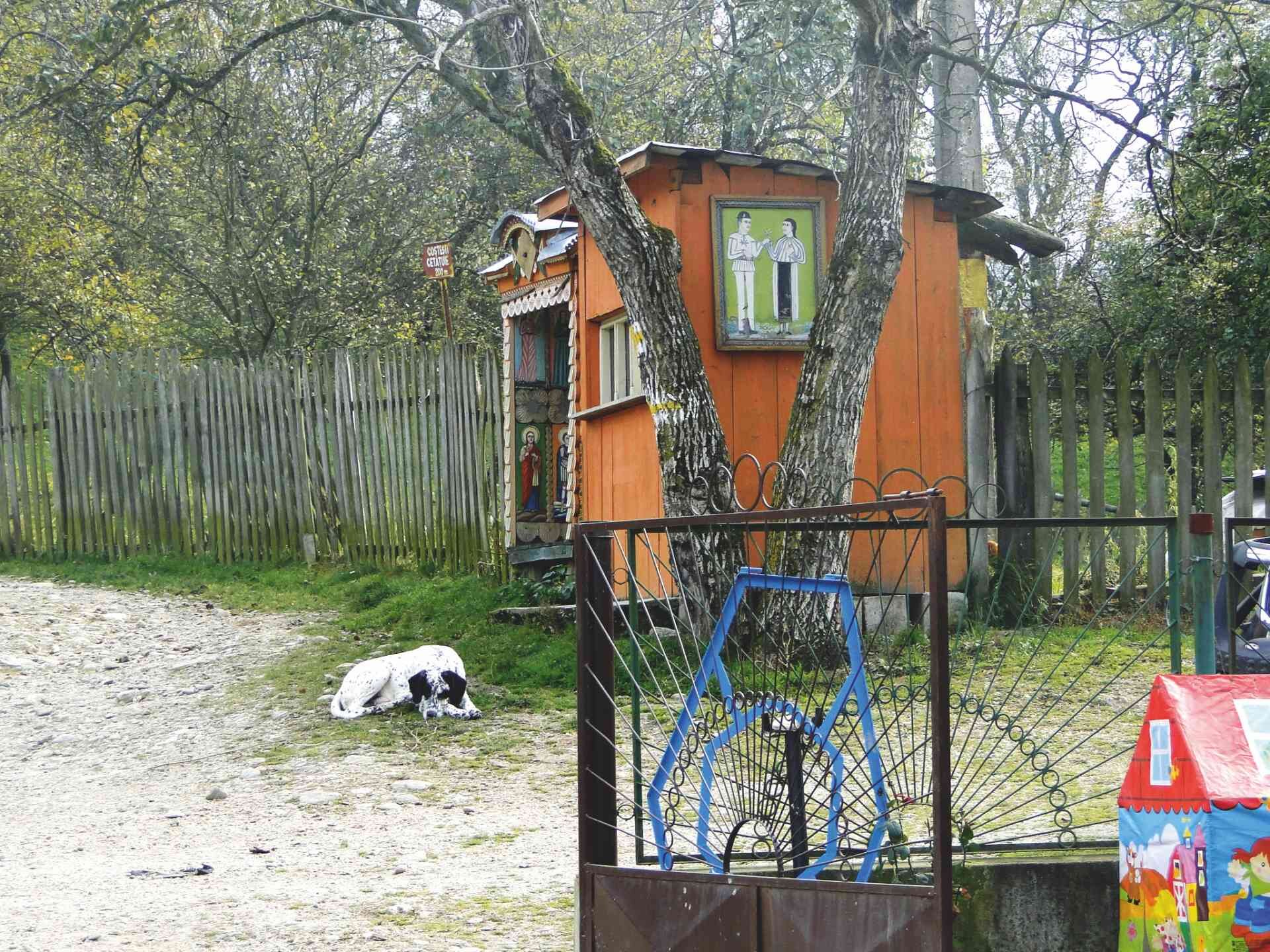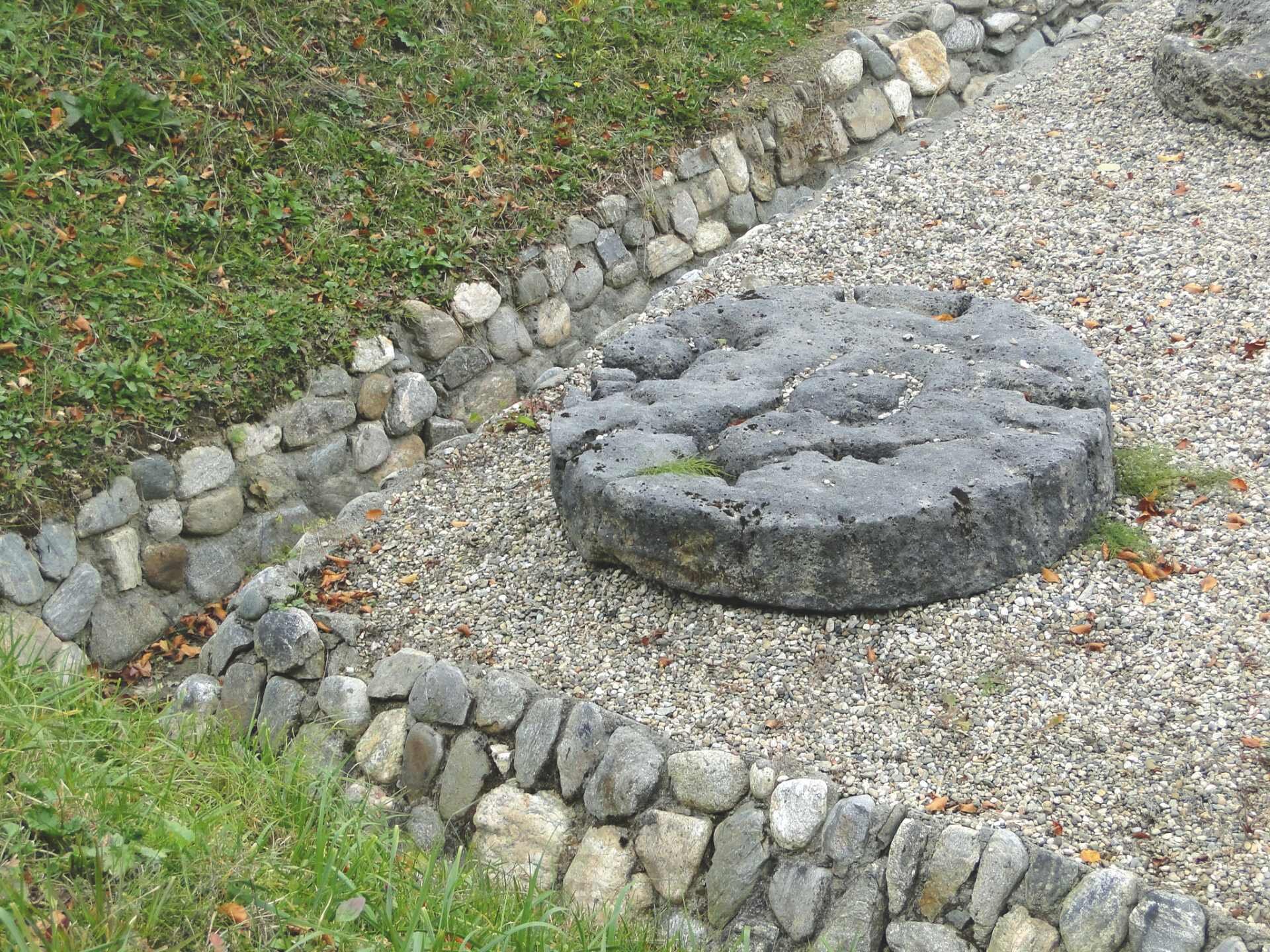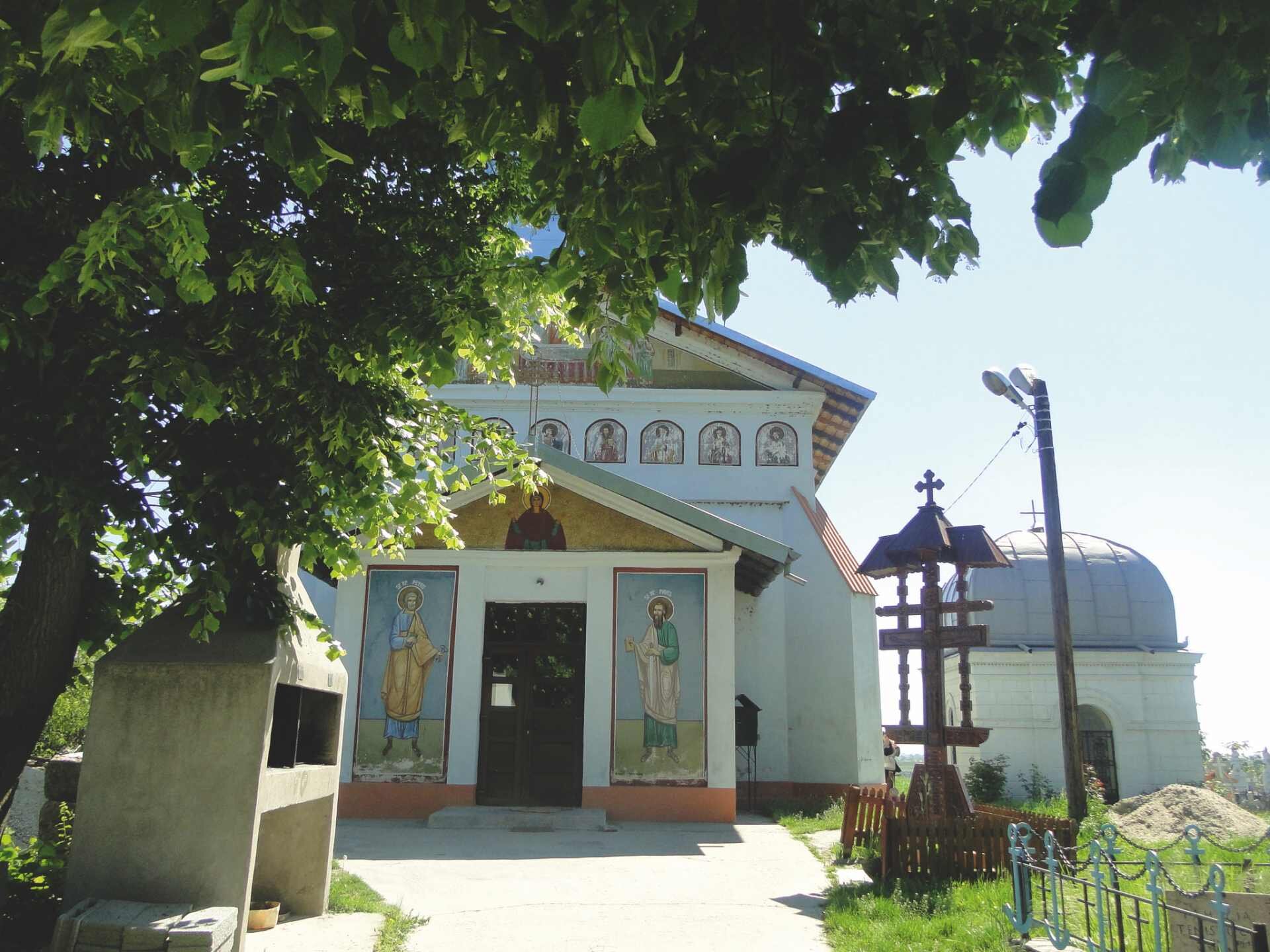
Heritage Frustrations
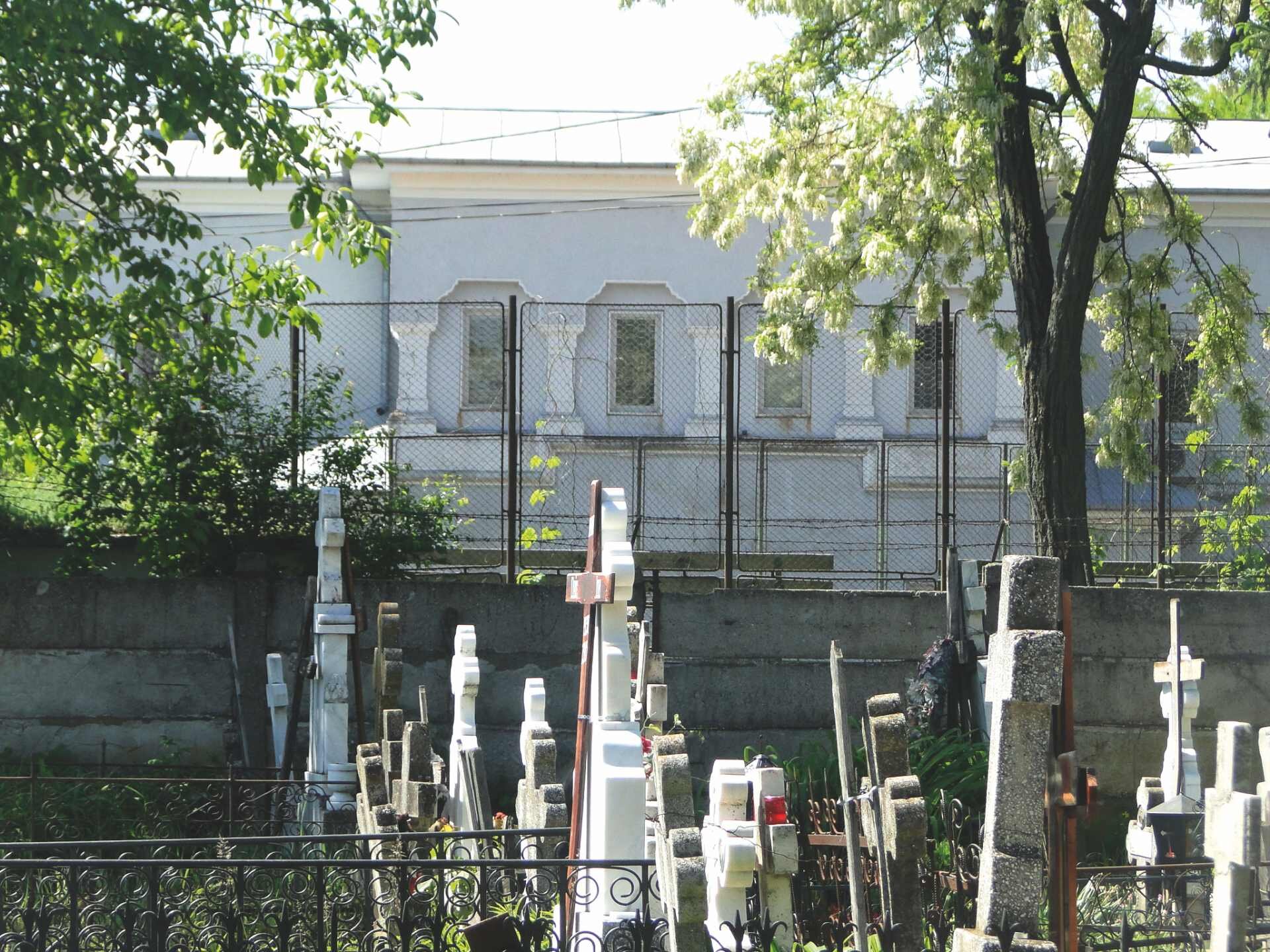
text și foto: Irina POPESCU-CRIVEANU
 Click for Romanian version
Click for Romanian version
Nearly three decades have passed since we cherished the hope, in the aftermath of the brutal socialist era, that a front for safeguarding national memory would be put together and the road to freedom would undoubtedly entail retrieving our long lost honour.
At first, things seemed to get back on track. Dumitru Popescu, Miu Dobrescu and Suzana Gâdea were followed by Andrei Pleșu as minister of culture. Also, Nicolae Stoicescu was appointed minister of Cults. The first Monuments Commission was run by Grigore Ionescu. At that time, it was hard to find more respectable and more appropriate persons to hold these public offices.
But all this was short lived. The office of minister of culture was subsequently held by an endless list of more or less adequate persons and personalities1, providentially interrupted at some point, for four years, by Ion Caramitru, who did more for the cultural heritage than all the other ministers together, presumably also because he had the time (and the staff) to do so. In those years we would still murmur and grumble, in our belief that the small flaws of the heritage world were still susceptible to be rectified. We would later fall completely silent, as the grumbling gave way to despair. The rare moments of hope that followed were simply swept away by long periods of utter sadness.
What I am writing now is a partial “diagnosis” of the problems besetting the Romanian heritage in the early twenty-first century. I shall select only a number of ideas that I have recently extracted2 from the far too many texts (hopefully) forsaken in the drawers of the former ministers’ desks. They only matter inasmuch as they testify to the fact that someone, in Bucharest, had genuine concerns about the fate of the cultural heritage. Fortunately, they are not the only ones.
Lasciate ogni speranza, voi ch’entrate.
The Romanian system for the protection of heritage buildings is based on the legislation on historical monuments and the archaeological heritage. The protected areas are too summarily and vaguely defined in legislation, and landscape protection is non-existent.
The archaeological heritage protection legislation is not correlated with the historical monuments protection legislation, and the consequences of this are visible (for instance, the archaeological research - consisting in interventions on the historical monuments - does not observe the endorsement procedure specific to the latter, while this exception is not provided in the law; conversely, the weak archaeological heritage registration system makes possible numerous interventions leading to the destruction of the protected structures).

Dă clic pe butonul de editare pentru a modifica acest text. Lorem ipsum dolor sit amet, consectetur adipiscing elit. Ut elit tellus, luctus nec ullamcorper mattis, pulvinaThe goal of protecting the vicinities of historical monuments, the historical town centres, the heritage buildings, the rural heritage - which are or should be protected built-up areas - has not been achieved, because those special urban planning tools designed to regulate building demolition and building manner, to restrict the changes, to control human activities and to strike a balance between the old elements that are kept and the new elements that are permitted are basically not in place.
The protected areas do not benefit from an explicit legal regime in the current legislation. The absence of a special law renders their protection optional. The obligation to procure a permit from the Ministry of Culture to carry out any operations in the protected areas does not amount to protection proper. In fact, in the absence of solid legal provisions, the demolition of the buildings that are not included in the Historical Monuments List may be effected inside these areas, as well.
On rare occasions, such areas are regulated by zonal urban plans which need to be endorsed by the ministers of culture and urban planning in order to be approved. However, securing such endorsements does not guarantee the correctness of the rules that would govern them, given the superficial terms provided in such endorsements. Take, for instance, the case of the 98 protected built-up areas in Bucharest, governed by building terms that are far from well-adjusted to the protection goals for such areas.
It is encouraging that, in the past decade, the public opinion, as voiced by a number of relevant NGOs, has grown increasingly aware of the need to establish a system for safeguarding the areas with historical, archaeological and landscape value; however, it has not pushed sufficiently for the creation of a solid legislative framework.

Historical monuments are significant immovable properties with outstanding value for the history, culture and national and universal civilization; the historical monument regime is granted by including such immovable properties in the List of Historical Monuments.
The authority in charge of protecting the historical monuments is the Romanian state, represented by the Ministry of Culture, and, less explicitly, the ministry in charge of urban planning. Protection of historical monuments is achieved by specific direct methods and, indirectly, by establishing protection areas around them.
The obligation concerning the use of the historical monument, accompanying the ownership, concession or leasing documents throughout the life of the immovable property, is drafted by the safeguarding authority and states the terms and rules governing the use and maintenance of the immovable property concerned; the obligation shall be deemed to be „an easement established for the benefit of that immovable property” and shall be registered by the owner in the real estate register. The obligation concerning the use is only drafted in a small number of cases, and is given a rather limited scope.
The protection area should be established and delineated concurrently with ascribing the historical monument status to the immovable property, according to law; this is the case only in a small number of cases.
Historical monuments are divided into three categories (monument, group of buildings and site) and two value groups.
The concepts used herein - monument, group of buildings and site - have been taken over from the World Heritage Convention (1972), which, in its turn, draws on the Venice Charter, 1964. Although ensuring a certain connection of Romanian legislation to the European and global one, the operational consequence of including in the same legal category various classes of buildings, developments and combinations thereof differing in terms of nature, characteristics and conservation needs - failing other methodological clarifications - has been the failure to differentiate between the values contained by such monuments, groups of buildings and sites, and, implicitly, to understand the specific manner of conservation thereof.
The categories “groups of buildings” and “sites” include territories with a larger or smaller area which are protected or not, as the case may be. Their necessary protection in terms of urban planning cannot be achieved by the authority protecting historical monuments - The Ministry of Culture, and the protection specifically granted to separate monuments (such as the Romanian Athenaeum, for instance) is impossible in the case of sites such as the “UCB district” or “sites” I and II of the Bucharest Municipality, covering the city area developed until 1831. As far as the groups of buildings and most sites are concerned, the obligations of use should take the form of urban planning regulations, which is not the case.

The classification into value groups does not underlie a different funding system; it is only the intervention approval prerogatives that differ: the Ministry of Culture for monuments included in the value class A and the county directorates for those included in the value class B.
The enforcement of legislation is faced with major efficiency issues, given the chronically insufficient staff, the non-revision of the List of Historical Monuments in the past 20 years (failing to cover all the heritage values requiring protection) and, especially, an economic, social and political context that disregards heritage issues, sometimes at the cost of eluding international commitments.
The heritage categories where protection is most deficient are the following:
The archaeological heritage in general, exposed to significant destructions: vandalism, theft, agricultural exploitation, industrial exploitation, constructions;
Minor architecture and urban historical landscape (the historical urban structure including the historical street network - streets, avenues, squares, green public areas - in the plot division system, the traditional positioning of the buildings on those plots and the sizes of the building volumes).
The vernacular heritage and the rural landscape - the entire rural economy system, the manner of using the local materials, the traditional building techniques;
The buildings whose destination differs from that of the landmark buildings: industrial buildings, ports and dams, ordinary and narrow railways, railway stations and their outbuildings, historical roads and passages through mountain passes - bridges, mines, salt mines, public works with related installations, civil engineering works, historical fishponds, ponds for watermills and so on;
Historical roads of all kinds and transportation means: mocănița [old train running in a mountainous area], industrial railways, tramways, ferry boats, cable cars;

Public planted areas located inside localities, ornamental or household planted areas on plots, cemeteries, water streams inside localities;
Constituent elements: household outbuildings to dwellings, enclosures, statues, fountains, roadside crucifixes, crosses, urban furniture items, pavements, public installation signage, gates;
Artistic constituents of buildings, interior paintings, icons, furniture, religious artefacts whose protection should be covered by special procedures;
The traditional names of villages, fortresses, streets, public spaces, historical places; the historical or traditional organisation of habitation and of other urban functions; the administrative-territorial organisation;
The customs and all the items connected to the intangible heritage, including territory or landscape aspects related thereto (pilgrimage routes, historical places, coherence of large-scale areas etc.).
The owners’ rights versus obligations ratio is far from balanced, as the rights are insignificant and the obligations, numerous. Conversely, the state fails to fulfil its obligations and the penalty system is ineffective.
The local public administration gets very rarely involved in the protection operations concerning the heritage managed by it. The specific operations funded from national and, in particular, European funds consist in the refurbishment of educational institutions, city halls and other historical monuments pertaining to the public domain of local interest.

Local large-scale actions taken in the urban areas are less numerous. The most visible ones have been taken in the historical centres of cities such as Sibiu and Alba Iulia, cities in which tourism has skyrocketed3, and the numbers show the important economic aspect. Other city centres that have benefited include Cluj, Timișoara, Baia Mare or Sfântu Gheorghe. Overall, however, the actions undertaken by the public administration are rare, carried out at a slow pace and fail to materialise in measures aimed at making the best of the heritage buildings.
The priority granted within public procurement procedures to such criteria as the lowest price or the shortest time period without clearly stating the expected performance leads to poor or very poor technical documentations and interventions, which irremediably affect the valuable heritage buildings.
Those individuals who own historical buildings and consider it is worth investing in this heritage in order to make the most of it generally obtain fairly decent results. These persons are firstly the owners of buildings that are located in the historical town districts, and secondly, the various cults which thus maintain adequately their religious edifices.
The “household” exaggerations of the administrators of such religious buildings are similar to those of other public or private owners, only a little more visible: altering the roof covering, the joinery, oil painting on stone or plaster, electrical installations in the painted interiors or outside, fashionable furniture and lighting fixtures, trees cut off, inadequate planting, modified enclosures, other interventions in the yards (from whitewashing the trees to painting the statues).

The reduction or suppression of the initial study, research and scientific planning phases, to increase the execution speed, is a problem faced by all types of investment, public or private.
There are certain heritage protection interventions carried out by private organizations or persons which stand out due to their scientific approach, the use of traditional working techniques and media coverage (such as the actions financed by the Prince of Wales in certain villages in Transylvania, the operations carried out by Pro Patrimonio Foundation, Transylvania Trust, OAR and so on).
A special case is the “Roșia Montană operation”, where the private investor has carried out large-scale scientifically grounded operations consisting in archaeological research and building restoration. However, such research is not intended to make the most of the local archaeological heritage, but to ensure the investor fulfils its relevant obligations on most of such territory; or this does not rise up to the remarkable historical value of the area concerned.
The granting of state support for the protection of the heritage buildings assumes very different facets, depending on the type of historical monument owner: efficient problem-solving and unconditional support in the case of public property managed by state institutions; support depending on political criteria when it comes to the heritage which is the public property of the local administrative entities; slowness, obstacles and sometimes hostility in the case of private owners. Thus, we can talk about public administrators who benefit from active support and insufficient control, and about public owners who are subject to active control and benefit from insufficient support4, which leads to an unequal, fairly discriminatory, situation.

The main consequence of these attitudes is the weak protection from which the heritage benefits, irrespective of the owner: to this adds the action taken by the private owners who try to elude the heritage protection obligations incumbent on them (eluding the law or deliberately destroying the property owned by them). The punishments appear to be ineffective in this case, as well.
The involvement of the state or the public entities in the execution of works is very poor, due to the insufficient budgeting in this field. The state’s tendency to loosen its heritage protection control, to stay away from certain lawsuits and actions is complemented by the preference of certain private owners or state administrators to avoid getting involved in heritage restoration operations.
The state’s protection system relies on a proper (albeit with gaps) scientific basis, which is nevertheless enforced with difficulty, through a structure comprising very few specialists. Control is ineffective, monitoring is missing, the funding is insufficient; the area is targeted by the decentralization of public services, entailing loss of control at central level.
The design-endorsement-authorization system is, by reason of the nature of the problems, complex and time-consuming; this is worsened by the administrative complications springing from the laws, the subjective tendencies of some persons working in the endorsement-authorization system or some difficult situations arising from excessive exercise of the ownership right.

The weak representation of the staff specialized in cultural heritage protection within the local and county public institutions and departments and in the companies active in the heritage buildings field has negative consequences on the cultural heritage protection and presentation mechanisms.
The professions required for heritage protection are witnessing a decline; very few restoration architects, builders, engineers or specialized craftsmen pursue proper training. Specialised education is limited by the erroneous perception of this field, and the training of a small number of craftsmen is carried out through the agency of several educated intellectuals with modest means. Thus, most interventions suffer from poor quality in all respects, from the restoration principles to the execution details. The invasion of new materials, incompatible with the previous ones and whose behaviour over time is insufficiently known is detrimental to most old structures.
Although the heritage issues are apparently affecting the entire urban and rural setting, the protected territory amounts to as little as 0.5% of the national territory5 (let us also mention that the density of historical monuments is exceedingly low compared to that of other European countries)6. The rural heritage is underrepresented (especially in the areas characterized by a high settlement density and intense population vitality), while the urban one is overrepresented; urban and rural centres do not benefit from protection (the system of protected areas is not regulated legally, and is exclusively supported by urbanistic practice, and in only a limited number of cases, too).
The large regional and local discrepancies as regards the protected building type, categories, number and the protected areas in which they are situated are caused by the lack - during the last 60 years and especially after 1990 - of research directed towards identifying the specific and the valuable items in the territory (let us remember that the Historical Monuments List relies in part on that drafted before 1989 and also on that drafted immediately after the Revolution, and lacks modern methodological grounds and serious research).
This fact is even more serious considering that, in the last 20 years, development has been implemented by sacrificing a large mass of buildings considered to be obsolete, while part of them deserved to be protected. The lack of any correlation between the goals to conserve the territorial values and the development values, the weaknesses of the urban planning and territory development documentation endorsement system, the non-correlation of the real estate development legislation, all these have led to the current situation in which the heritage is being continually destroyed. We are all extremely aware of the fact that this is an irreversible process.
The latest news is far from encouraging. The refusal (be it temporary) of the Romanian state to include Roșia Montană in the World Heritage List, despite the opinions voiced by the national and international specialists, is only the most powerful reflection in recent times of the distance taken by public authorities from the scientific and intellectual world. Considered exclusively in economic or political terms, far from gaining any kind of social role, the heritage seems to be more fragile today than ever.
Eheu!
NOTES
1. Spiess, Golu, Sălcudeanu, Maior, Sorescu, Mărginean, Zanc, Theodorescu, Muscă, Paleologu, Hunor, Diaconu, Hasotti, Barbu, Hegedüs, Vulpescu, Alexandrescu, Șuteu, Romașcanu, Știrbu, Ivașcu, in total (with the two ministers quoted in the text, with the interim minister Costoiu and with the second term of office of minister Hunor) - 25 terms of office in 28 years.
2. Excerpts from: Irina Popescu-Criveanu, architect Sergiu Nistor, PhD, architect and urbanist Șerban Popescu-Criveanu, Alexandra HAJNŠEK (Quattro Design), Protecția monumentelor istorice și a patrimoniului construit, in: Agora Est Consulting, Quattro Design, Strategia de Dezvoltare Teritorială a României Studii de fundamentare, beneficiary: MDRAP, 2014, http://sdtr.ro/upload/STUDII/20.%20Raport_Protectia%20monumentelor%20istorice%20si%20a%20patrimoniului%20construit_.pdf
3. The project “Sibiu - European Capital of 2007”, initiated under minister Caramitru (2002 - partnership with Luxembourg), was approved in 2004 by the EU Council and Parliament. The number of tourists increased from 220,000 (2005) to 700,000 (2008); 337 projects were carried out, totalling 2,062 events; the value of the funding allotted to cultural projects in 2007: circa EUR 13,400,000 - according to Sabina-Adina Luca, “Rolul programului Sibiu 2007 - Capitală Culturală Europeană în dezvoltarea socioeconomică urbană” [The Role of Sibiu 2007 - The European Cultural Capital programme in urban socio-economic development], In: Calitatea vieții, XX, no. 1-2, 2009, p 171-178. The tourist capacity in the city (expressed in places-days) increased by 1.4 times from 2001 until 2008 and by 2.4 times from 2008 until today (increasing in total by 3.2 times from 2001 until 2018); a similar increase can be noted in the case of Sibiu County. In Alba county, the tourist capacity in 2017 was 4.15 times higher than in 2005 (a spectacular increase after 2011); on the national territory, during the same time period, it increased by 1.6 times (Tempo Online).
4. It should be noted that the heritage of churches (main confessions) is actively supported by the state; in the case of the Romanian Orthodox Church, the financial support is received from various sources, the most consistent part being directed towards the construction of new churches.
5. Estimate of the surface area of historical monuments together with their protection areas, and of the built-up protected areas (Quattro Design, 2013). By comparison, natural areas take up circa 30% of the national territory.
6. Romania ranks in the last third (15 out of 19 countries analysed) in a European top of heritage density, calculated either in relation to the country area, or by reference to the number of inhabitants. See the analysis by Sergiu Nistor in Quattro Design, op. cit., chapter 3.1.5.a., and Sergiu Nistor, Irina Ioana Călinescu, „Patrimoniofobia: falsa dilemă a conflictului dintre dezvoltarea și conservarea patrimoniului” [Heritage-phobia: a False Dilemma in the Conflict between Heritage Development and Conservation], in Arhitectura, no. 2 (644) 2013, p. 20-21. The calculation takes into consideration the 19,880 positions of historical monuments included in Chapter II - Architecture of the List of Historical Monuments (2010). The situation has not progressed significantly in the last years, even though the List of Historical Monuments was republished in 2016.

